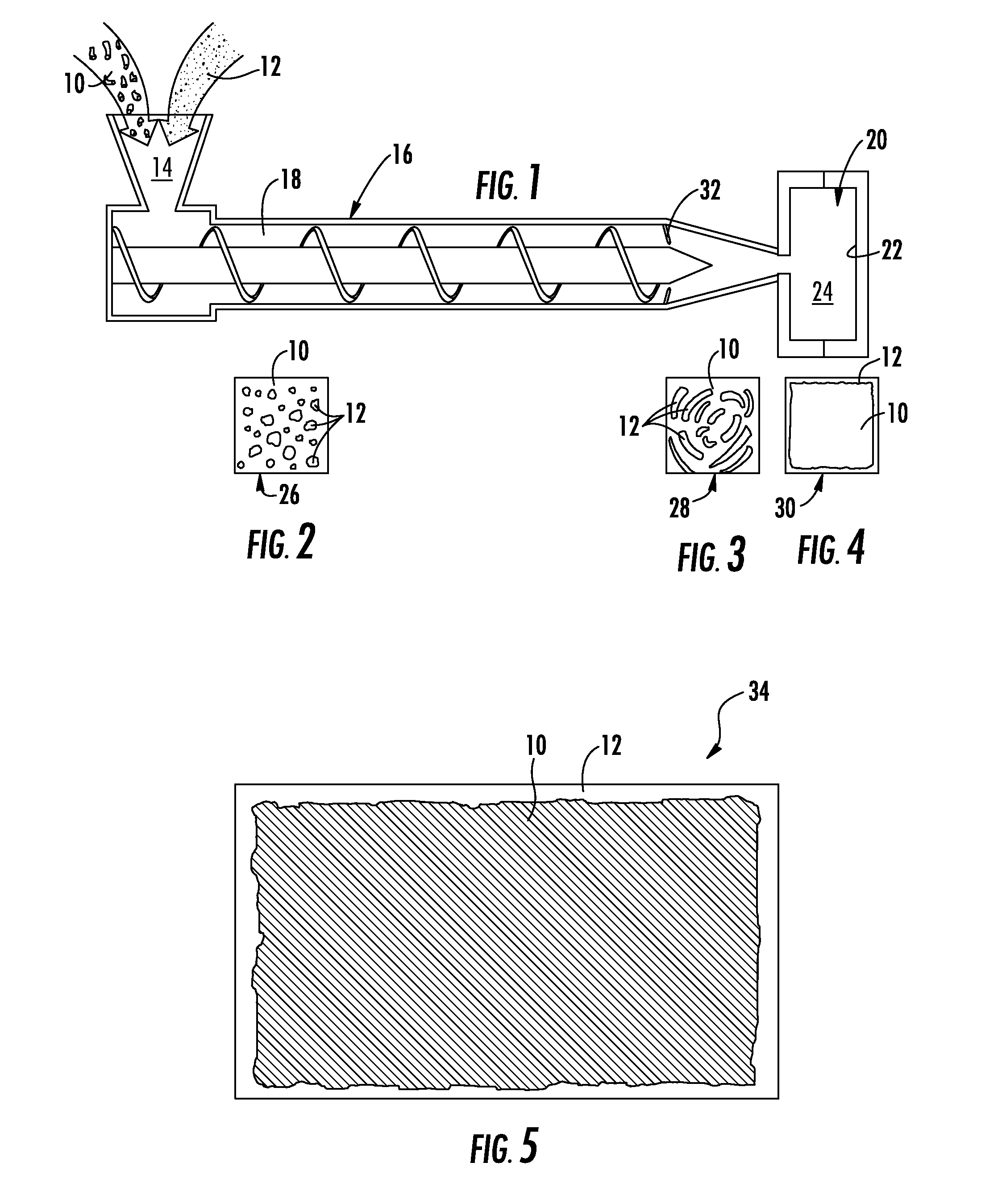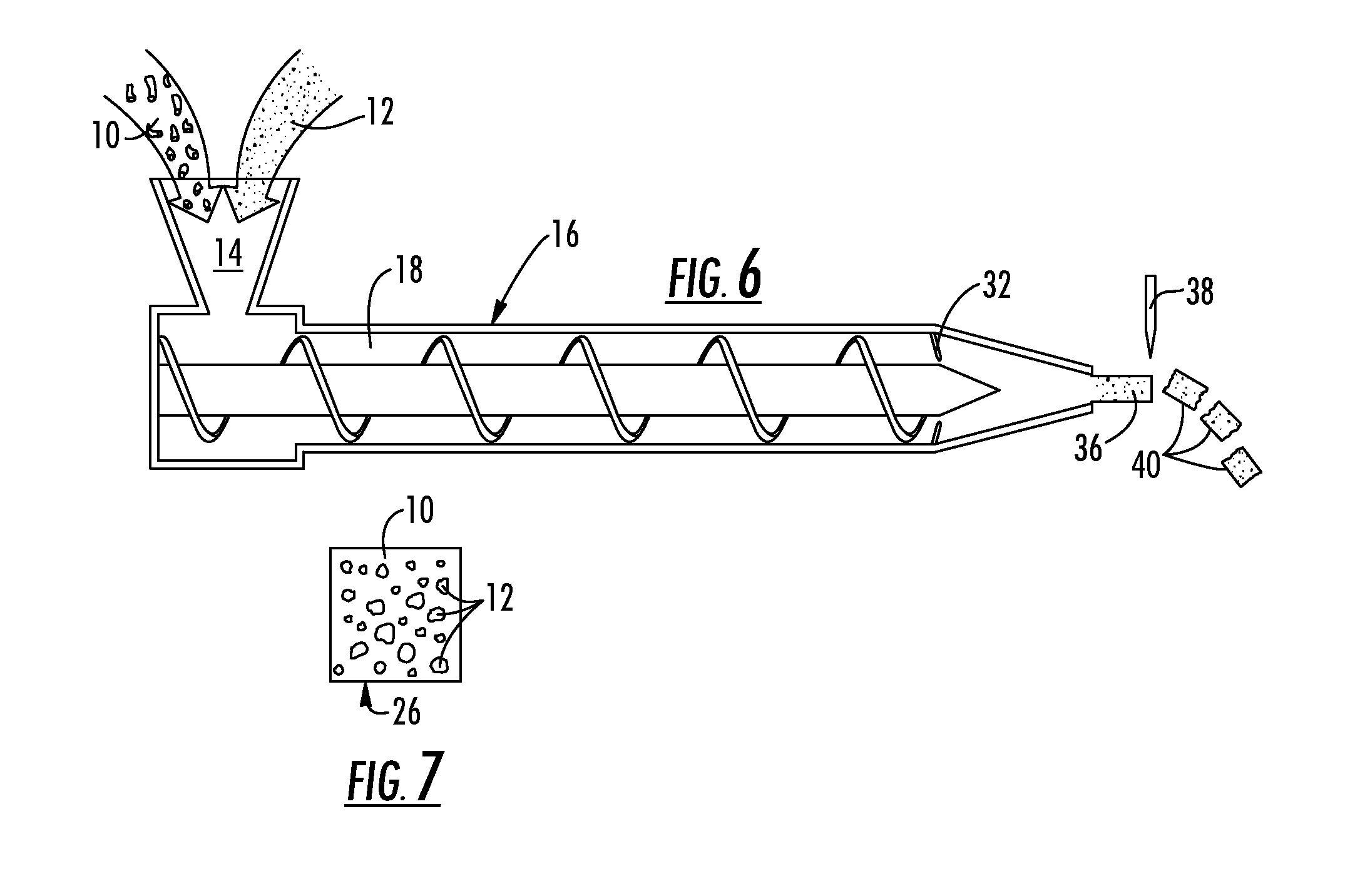Molding composition for forming in-mold metallized polymer components
a technology of metallized polymer components and compositions, which is applied in the field of polymer components, can solve the problems of other steps, dramatically increase the cost and time required for manufacturing parts, and dramatically increase the cost of manufacturing parts. , to achieve the effect of high durability and resistance to wear
- Summary
- Abstract
- Description
- Claims
- Application Information
AI Technical Summary
Benefits of technology
Problems solved by technology
Method used
Image
Examples
example 1
[0028] An ABS polymer resin is selected having a usable molten range of between about 440° F. and 470° F. wherein the ABS is typically compounded between the range of 440° F. and 455° F. and molded between about 455° F. and 470° F. The metallic alloy is formed using approximately 95% Tin and approximately 5% Antimony having a melting point of 463° F. In this example, the metallic alloy is mixed into the polymer resin using the compounding temperature range. Once the composition passes the check ring in the injection molding barrel, the temperature is elevated to the preferred molding temperature for the polymer of 470° F. causing the alloy to melt as the composition is injected into the mold cavity under pressure.
example 2
[0029] A PPS polymer resin is selected having a usable molten range of between about 560° F. and 610° F. wherein the PPS is typically compounded between the range of 560° F. and 565° F. and molded between about 565° F. and 610° F. The metallic alloy is formed using approximately 60% Tin and approximately 40% Zinc having a melting point of 585° F. In this example, the metallic alloy is mixed into the polymer resin using the compounding temperature range. Once the composition passes the check ring in the injection molding barrel, the temperature is elevated to the preferred molding temperature for the polymer of about 590° F. causing the alloy to melt as the composition is injected into the mold cavity under pressure.
[0030] Clearly, while certain polymers 10 and metal alloys 12 have been referred to by name, the present invention is applicable to any process utilizing the general teachings described herein as they would function equally well with a base polymer 10 and metal 12 select...
PUM
| Property | Measurement | Unit |
|---|---|---|
| melting point | aaaaa | aaaaa |
| melting point | aaaaa | aaaaa |
| melting point | aaaaa | aaaaa |
Abstract
Description
Claims
Application Information
 Login to View More
Login to View More - R&D
- Intellectual Property
- Life Sciences
- Materials
- Tech Scout
- Unparalleled Data Quality
- Higher Quality Content
- 60% Fewer Hallucinations
Browse by: Latest US Patents, China's latest patents, Technical Efficacy Thesaurus, Application Domain, Technology Topic, Popular Technical Reports.
© 2025 PatSnap. All rights reserved.Legal|Privacy policy|Modern Slavery Act Transparency Statement|Sitemap|About US| Contact US: help@patsnap.com



